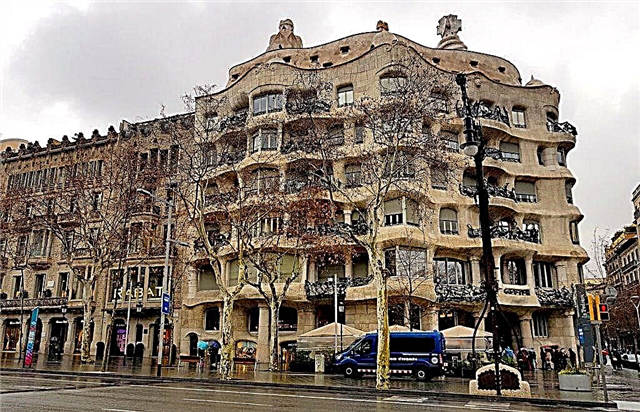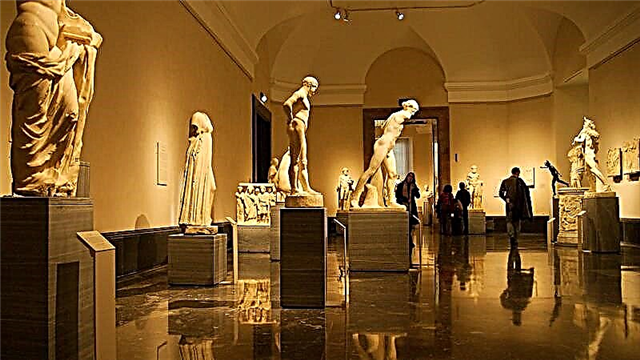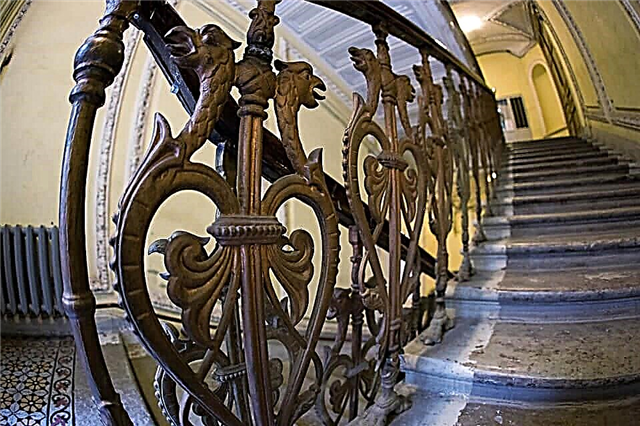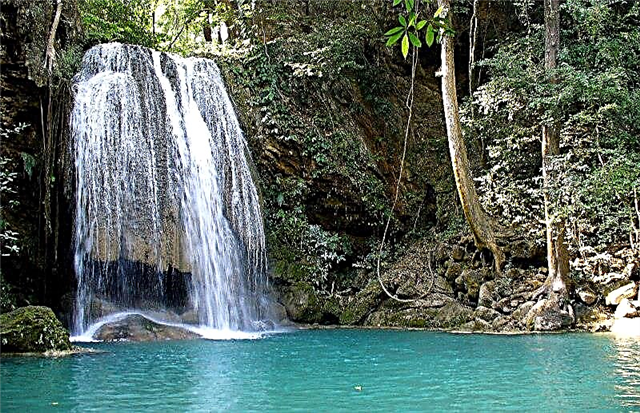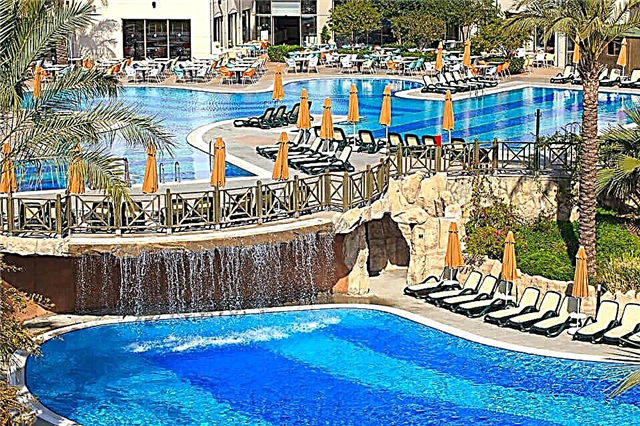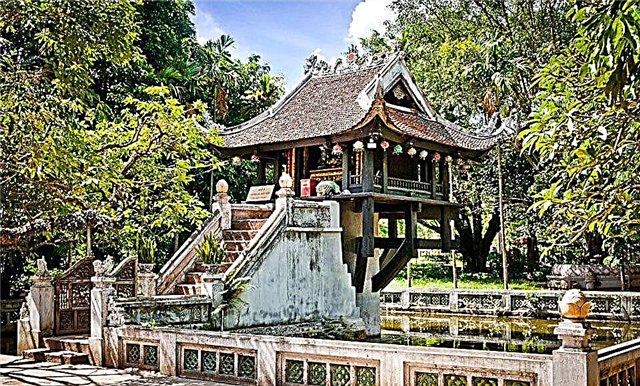What to see in Hanoi in 1 day on your own is of interest, first of all, to transit travelers. And it’s a pity. The capital of Vietnam has enough cultural, architectural and natural sites, for the sake of exploring which it is worth staying for a long time. But if, nevertheless, time is running out, you should not despair. The main sights are located compactly: a few hours are enough to get to know them. At the same time, it is important to correctly build the route. You should start from the center: all the most interesting objects are located there. They are located within walking distance of each other. And if you fail to see something, the hospitable capital is always glad to return visits.
Badinh Square

This place is the heart of the country and the center of the architectural ensemble of the capital. In the middle of the twentieth century, here from a low rostrum Ho Chi Minh announced the independence of Vietnam. Thus ended the struggle of the Gangwyong movement. After the death of the first head of free Vietnam, a tomb was erected on the site of the tribune: a mausoleum of gray granite. It looks like the Mausoleum on Red Square.
Over time, the following appeared in Badin:
- Ministry of Planning and Investment
- Presidential palace
- Ministry of Foreign Affairs
The National Assembly is being built on the site of the old Badin house. The area is quite laconic, no fanciful elements can be found. The territory is divided into rectangles, planted with decorative grass, between them paved paths of tiles. There are 240 such plots in total. State symbols are located everywhere: flags, emblems. Lawns are neatly trimmed. You are allowed to rest on them if you are too tired. Unusual lanterns are lit in the evening. The square is a must-see for tourists. Previously, military parades were often held here, but today the tradition of marching in formation in front of the central building of the ensemble is outdated.
Presidential palace

The structure was intended to house the governor of Indochina. It took 6 years to build it. The author of the project is Vildier. In order to find a place for the building, the colonial authorities seized the territory from the owner. He did not receive the confiscation. And the nearby pagoda (about 1000 years old) was demolished because it interfered with the work.
Nobody was particularly concerned with tying the building to the terrain: the building has clear signs of the European neo-Renaissance. But the structure turned out to be unusual and very beautiful. It was proposed to enter inside by a chic front staircase, past the wrought-iron gates. The territory was planted with mango trees, lawns were laid, ponds were dug. The work was carried out according to the rules of European landscape design.
First, the governor-general of the colony lived in the palace, then French officers. And after the overthrow of the colonial yoke, the palace was used as a hotel for party workers and the military. Ho Chi Minh had certain principles, so he refused to live in the palace. Today, tourists are sure to photograph this dark yellow building. During the day it is an ordinary European palace, but in the evening it is beautifully illuminated by illumination. Unfortunately, you cannot enter inside, but guests of the capital are allowed to walk in the luxurious parks.
Ho Chi Minh Mausoleum

According to the will of the first head of free Vietnam, his body should have been cremated and the ashes scattered. But the second president, Le Duan, decided differently. On his orders, the body was embalmed and hidden to protect it from damage during the war with the United States. Subsequently, it was supposed to provide free access to the mummy in order to perpetuate the memory of the fighter.
The construction of the tomb began only after America abandoned its attempts to conquer Vietnam in 1973. The order was received by the Soviet architect Isakovich, one of the authors of the Lenin ensemble on Red Square.
That is why two mausoleums located in different parts of the world are so similar:
- their shape is cubic
- they have a stepped podium
The Ho Chi Minh mausoleum has a height of almost 22 m. Inside there is a room where the body of the leader rests. It is noteworthy that the hero is dressed very modestly: in rubber boots and a military suit, which has badly faded. It must be understood that this is how the creators of the memorial emphasize the fighter's asceticism during his lifetime. The first tier is a tribune for hosting guests of honor at official events. Just like in the Soviet Union, and then in Russia.
And the inscription is the same laconic: President Ho Chi Minh (on the Mausoleum on Red Square - Lenin). Rare plants are planted around the building: they were sent from different parts of the country. An orchard is also laid out. At night, the mausoleum is illuminated with red lamps. Every year, the body of the first head of free Vietnam is sent for planned conservation to Russia: for example, with the help of the achievements of Russian embalmers, it is planned to preserve the mummy for as long as possible.
Chua-Mot-Cat Pagoda

It is noteworthy that the religious building is located very close to the Ho Chi Minh mausoleum. Having seen enough of Soviet monumentalism, it's time to go to the airy Chua-Mot-Kot. The Chua-Mot-Kot Pagoda (Chua-Mot-Kot) is a restored structure, and the original was destroyed by the French. But, nevertheless, the pagoda is considered the oldest building in the city. Emperor Li Thai Tong did not have an heir, about which he greatly reared. Once the Goddess of Mercy appeared to him in a dream and handed the king a newborn baby. After a while, the emperor married a simple girl, who gave birth to the long-awaited heir.
To commemorate this event, Li Thai Tong ordered in 1049 to build a pagoda and dedicated it to the Goddess of Mercy. This building is a symbol of purity, kindness and meekness. In 1105, another emperor ordered a bell to be cast in order to install it inside. But the calculations turned out to be wrong: the metal bell is too heavy for such an airy structure: I had to leave everything as it was.
This building never ceases to amaze tourists: a light pagoda is erected on a stone pillar to a height of 4 m. And the pillar itself is located in the middle of the pond. A staircase leads to the sanctuary, also made of stone. But you can't go inside: all visitors stop at the entrance. The very place to pray for the sending down of the baby. On the sides of the stairs are stone lotus buds: a flower that symbolizes purity, meekness and kindness in Vietnam. The same sculptures are located in the pond. Nearby is Bodhi, a sacred tree brought by Ho Chi Minh in 1958 from India.
Ho Chi Minh Museum

This is one of the largest centers in Vietnam. The building itself is made in the form of an opening lotus flower: a symbol of purity and kindness. And inside everything is imbued with the spirit of Eastern philosophy: the sky should be spherical. And the earth is flat (square). This is exactly how the main hall is decorated: a blue dome of the ceiling, a square floor, decorated with images of flowers and animals of the country. And the statue of the dictator is located just between heaven and earth, that is, it provides their connection.
The center's exposition is extensive: about 100,000 items. They are compactly located on an area of 400 square meters. At the same time, there are interactive screens, audio guides are offered to visitors. You can go with a guided tour of a local student (they earn extra money and at the same time improve their language). The presentation of the material is very interesting: it tells not only about the heroic struggle for the country's independence led by Ho Chi Minh, but also outlines the events that took place in the world in the 19th and 20th centuries and related to Vietnam.
Part of the premises is allocated for exhibitions of traditional crafts for the country: varnishing, making carved products from stone and wood. Those interested can visit the library, read the extensive correspondence of the first president of a free country.Thematic exhibitions are also held. Uncle Ho Museum is the most visited place in the capital, which is facilitated by the low price of entrance tickets.
National Assembly of Vietnam

Unfortunately, this building does not exist today. The old Badinh Hall, built by a team of architects and used for sessions and meetings of the government of a free country, was demolished in 2008. The purpose of the event: to free up space for the construction of a new building. But during excavations it turned out that under the Badinh Hall is the old city of Than Long, the former capital of the imperial country.
It was decided to conduct archaeological excavations, but for now this place has been mothballed. Subsequently, the building of the National Assembly will complement the architectural ensemble of Badinj Square. It is noteworthy that the hero of the war of independence, General Vo Nguyen Giap, was against the demolition of the old building and openly expressed his opinion.
Lake Tay

This site is a natural heritage of Vietnam. The capital lake was formed from a small oxbow. Thay has a surface area of 2.3 square kilometers, and the length of the reservoir is 17 km. The picturesque place is eagerly visited not only by tourists, but also by locals. The coastal area is built up with luxury villas, hotels, restaurants and cafes.
Orchards and tea fields are also laid out around. The air is saturated with aromas of herbs and flowers. Locals come to the shore of the lake to do morning exercises, relax in silence, and admire the surrounding nature. A new fashionable tradition has emerged: to arrange a wedding aboard a floating restaurant. The coastal area is divided into 90 parts. One contains the oldest pagoda: Quan Thanh. Others have small restaurants.
Here you can enjoy shrimp, fish, vegetables and fruits. And you can spend the night in one of the cozy hotels. This place is a romantic date territory. Lovers relax in cafes, restaurants or simply on the grass, on spread bedspreads. The best time to visit Thay is early autumn. At this time, the surroundings are dressed in a fabulous outfit made of gold.
Quan Thanh Temple

This structure was built by the ruler of ancient Vietnam An Duong Vuong in gratitude for the fact that Saint Chang Wu protected the builders from ghosts. An evil spirit interfered with the construction of the fortress. After Chang Wu's intervention, he calmed down and the fortress was finally finished. The pagoda is adorned with a bronze statue of a saint. The height of the building is 4m. The statue of the sculptor was also installed in the temple. According to ancient beliefs, since the 11th century, the Quan Thanh Pagoda has guarded the city from one of the 4 cardinal points (from the north).
Throughout the history of its existence, the building was rebuilt more than once. The last modification was in the 19th century:
- tomb built
- changed courtyard
- triple gates built
- several halls for prayer and offering gifts
There is a small library inside. It contains priceless poems written in the 12th century. The residents of the capital themselves especially revere Kuan Thanh. But the decoration of the pagoda is rather modest, and the interiors are cramped. Therefore, tourists are often left disappointed with sightseeing. However, the advantage of the building is its accessibility and proximity to the historical center of the capital. Therefore, a trip to Quan Thanh can be combined with a study of the Tran Quoc pagoda, with a trip to the West Lake (Lake Tei) or the Lake of the Returned Sword (Hoan Kiem).
Changquoc Pagoda

This unusual pagoda is located on the small island of the Goldfish in Lake Tay. The island is connected with the mainland part of the capital by an embankment dam, along which you can drive to the temple by bus or walk. But Changquoc was not always here. The building was built in 541 years. According to the data provided by the researchers, this is one of the oldest buildings in Vietnam. It was erected by order of the ruler Li Nam. The original place where the pagoda stood was the bank of the Red River. But due to the threat of flooding in the 17th century, it was transferred to the island of Golden Fish.
And Changquoc changed its name more than once:
- when it was built, it was named Thaikuok (discovery of the country)
- in the 15th century it became Anquok (peaceful state)
- then - Chanbak (peaceful north)
- Le Hi Tong renamed the pagoda Chang Quoc (Peaceful Country)
In the early 19th century, Changquoc was rebuilt for the last time. Now it is a single complex, it has 3 entrances, a central tower and a guest room. The territory of the temple is very well-groomed: lawns are laid out, decorative and fruit trees are planted. Changquoc is located in a romantic place, it is picturesquely reflected in the water of Lake Tay, so tourists willingly visit it.
Hoan Kiem lake

The second name of the lake is Luc Tui (Green Water). The surface of the reservoir is constantly green. At first, scientists assumed that the color was the result of the presence of microalgae. But today the lake is constantly being cleaned, and the water is still green. Hoan Kiem is located in a part of the old riverbed of the Red River. Once, both reservoirs were one, but over time, the lake became isolated. Hoan Kiem is the most visited place in the capital: both locals and tourists come here.
The coastal area is very picturesque: lawns and flower beds are laid out. For relaxation, benches are placed, secluded gazebos are entwined with vines. Hanoi people come ashore for outdoor sports. An ancient legend gives the lake its charm. In ancient times, Vietnam was at war with China, and the enemies always won. Once a magic turtle appeared to the hero Le Loy and gave him a magic sword. It was with his help that the hero defeated enemies.
But during the celebration of the victory, the turtle again appeared to Le Loy and said that this weapon smashed enemies, but did not help the conquerors. Le Loy returned the sword to her. The turtle plunged with a blade to the bottom of the lake, and no one else saw her. And the reservoir was named the Lake of the Returned Sword. Residents of the capital believe that, although the amphibian is not shown to people, it still lives in the depths of Hoan Kiem.
It belongs to the species of soft-shelled reptiles. And if the city is threatened again, the turtle will once again give a magic sword to the modern hero. There are many hotels of different price categories on the coast of Hoan Kiem. If you wish, you can stay here for the night.
Vietnam Museum of Military History

The creation of the complex was initiated by the first President of Vietnam, Ho Chi Minh. He paid great attention to the patriotic education of young people, therefore, even before the opening of the center, a temporary exhibition was organized on his order. The exposition was officially opened in 1956. It was timed to coincide with the 15th anniversary of the national army. The territory was chosen well: the Hanoi citadel. Some of the exhibits were placed in the open air, the other - in the premises of the fort.
Particular attention was paid to the Flag Tower: this structure has been perfectly preserved since the time of the rule of the French. Today, the exposition consists of 150,000 storage units, it occupies 30 halls with an area of 13,000 square kilometers. The most interesting part (military equipment of varying degrees of integrity) is located on the street. Many tourists limit themselves to visiting this particular part of the exhibition. But what is exhibited in the premises is also worthy of attention.
These are documents, military clothing, weapons, personal belongings of soldiers and officers who fought on the side of Vietnam and against it. There are many products of the Soviet military industry here. The oldest artifacts date back to the 18th century. After completing the tour, many tourists climb the Flag Tower, from the observation deck of which an interesting panorama of the citadel's surroundings opens.
Lenin Park

This place is located near the Museum of Military History. At first he was called Thong Nya. This name (united) expressed the hope for the unification of the split country, and received the name of Lenin in April 1980. The USSR gave the statue of the founder of the October Revolution to Vietnam in 1982 for the 5th Congress of the Vietnamese Communist Party. The author of the sculpture is Tyurenkov.
The then head of the Soviet Union, Mikhail Gorbachev, attended the grand opening of the monument. Fresh flowers are constantly lying at the monument. And the park itself is a favorite place for residents. Here the Hanoi do gymnastics, and the annual spring flower festival is also held here. You can relax in Lenin Park before continuing your sightseeing in the capital of Vietnam.
Art Museum

The placement of artifacts is very interesting: each section corresponds to a stage of the country's development. The storage units are collected from all over the world and describe Vietnam from ancient times to the present:
- Items of religious and secular content are displayed on the ground floor. Here you can see Buddha statues carved from stone and wood, images of national heroes and fairy-tale characters. The "youngest" exhibits were made in the 19th century. The artifacts are in excellent condition.
- On the 2nd floor, guests are greeted by an exhibition of interior items and handicrafts. Interesting drawings in various techniques, made on paper from rice fibers, costumes, lacquer painting, wood carving.
- The 3rd floor is dedicated to contemporary art of Vietnam. Painting was actively developing in the 20th century. Artists began to paint in a manner that was not typical for them: with oil paints. They were taught by the French artist Victor Tardieu. But the traditional lacquer miniature has not been forgotten either: works created in the 20th and 21st centuries are exhibited here.
It is noteworthy that the exposition is perfectly organized: each item has an information plate with text in Vietnamese, Russian and English.
Temple of Literature Van Mieu

The Van Mieu Temple is located near the citadel. This building is dedicated to Confucius and his teachings (there are few such temples in Vietnam). It can be considered the first university in the country. The buildings of the complex are perfectly preserved, they were not very much affected by the war. Today, guests can explore buildings dating back to the times of various dynasties. And the Vietnamese conduct here not only excursions, but also lectures, seminars and exams. Exactly in accordance with the teachings of Confucius.
After passing the entrance gate, guests see 3 paths dividing the territory into 5 parts:
- Here, visitors are encouraged to walk through small arches to select Acquired Talent or Perfect Virtue.
- In the second part, the guests will visit the Literary Pavilion. The red stone building was built at the beginning of the 19th century.
- Here is what many people have been looking for for years: the Well of heavenly purity. And nearby you can see the storage facilities for the treasures donated to the temple.
- This is the place where Confucius and his disciples prayed. Nearby there is a pavilion for ceremonies and a small museum with an exhibition of personal belongings of famous students.
- Location of the Imperial Academy. There is an educational building, a building for students, storage rooms. The Van Mieu courtyard was completely destroyed by French troops leaving the country, but in 2000 the Vietnamese authorities restored it.
The overall impression of the complex is an improved copy of the Kufu Temple, built in the place where the great philosopher and thinker was born.
Cathedral of Saint Joseph

The temple was built by the French at the end of the 19th century. In appearance, it resembles Notre Dame de Paris. And at the time of colonization, it was the main place for the prayers of Catholics. To build Saint-Joseph, the French authorities demolished the Bao Tien Pagoda. And after the departure of the French, difficult days began for the cathedral. The priests were repressed, and the treasures of the cathedral were plundered. Eventually Saint-Joseph was closed. But in 1990 the cathedral was returned to the believers, and on Christmas Day 1990 the first Mass was celebrated here.
Today it is the main Catholic cathedral in the country. The architectural style of the building can be defined as neo-gothic. The Saint-Joseph Towers are symmetrical, they are over 30 m high. Stained glass windows were made in France. Unfortunately, due to the unfavorable environmental situation in the city, the walls of the temple are constantly darkening. In the courtyard of the cathedral, you can relax and, if you're lucky, listen to live music. Nearby there is a cafe serving delicious coffee.
Hanoi Hilton

This is a small part of the dreaded Hoalo prison, which the American prisoners called the Hanoi Hilton. This building was erected by the French to contain the Vietnamese opposing the ruling regime. Initially, there were 450 of them. During the war with the United States, downed American pilots were kept here. Their number increased, and conditions of detention worsened. Torture and humiliation were practiced. Therefore, Hanoi Hilton is a mocking name given to the prison by the pilots held here.
At the end of the twentieth century, Hoalo was almost completely demolished, but a small part was still left. Probably for the edification of the descendants of those Americans who were kept here in different years. Today you can see a fragment of a stone wall, a small barrack, and inside you can familiarize yourself with photographs, documents and the atmosphere of the cells of the terrible prison. The US military hasn't forgotten Hanoi Hilton either. At the end of the twentieth century, a feature film was shot based on the stories of former Hoalo prisoners.
Hanoi Citadel

The Citadel is a huge complex with palaces, temples and outbuildings. The first buildings were built during the reign of the emperors of the Li dynasty. But the citadel was constantly rebuilt, destroyed during long wars, so by the beginning of the 21st century, little remained of the historical buildings. At the beginning of the 21st century, excavations began on the territory of the fortress. Today, archaeologists work on an area of 20,000 square kilometers and have discovered many artifacts, the oldest dating back to the 11th century.
The difficulty of excavation lies in the layering of cultural layers on top of each other. From the ground structures, tourists are attracted by the 15th century imperial palace Kinthien. But its preservation is unsatisfactory: these are ruins. The Flag Tower and the North Gate are much better preserved. The complex is open for inspection, but access to the northern part is closed. In 2010 it was included in the UNESCO World Heritage List.
Opera theatre

This theater is a simplified copy of the Grand Opera in Paris. It was built by the colonialists in 1911. Since the opening, world celebrities have toured on this stage. During the war of independence, the building was badly damaged during the street fighting. After Vietnam gained independence, performances began again in the theater. At the end of the twentieth century, the building was restored and reconstructed. Today his stage meets all international standards. Local singers and world celebrities perform here.




